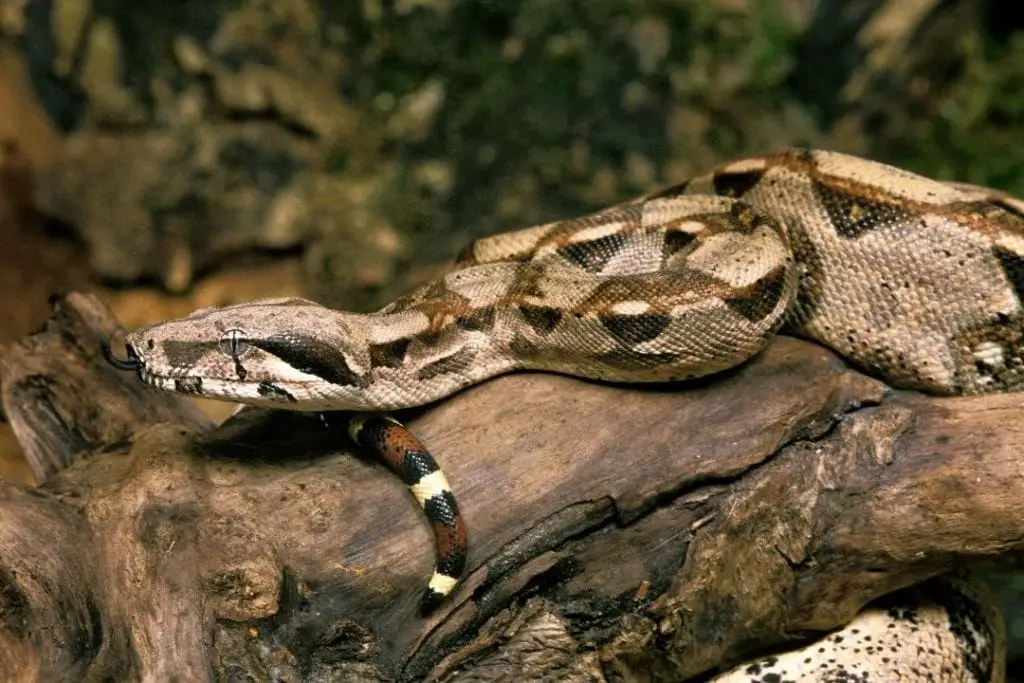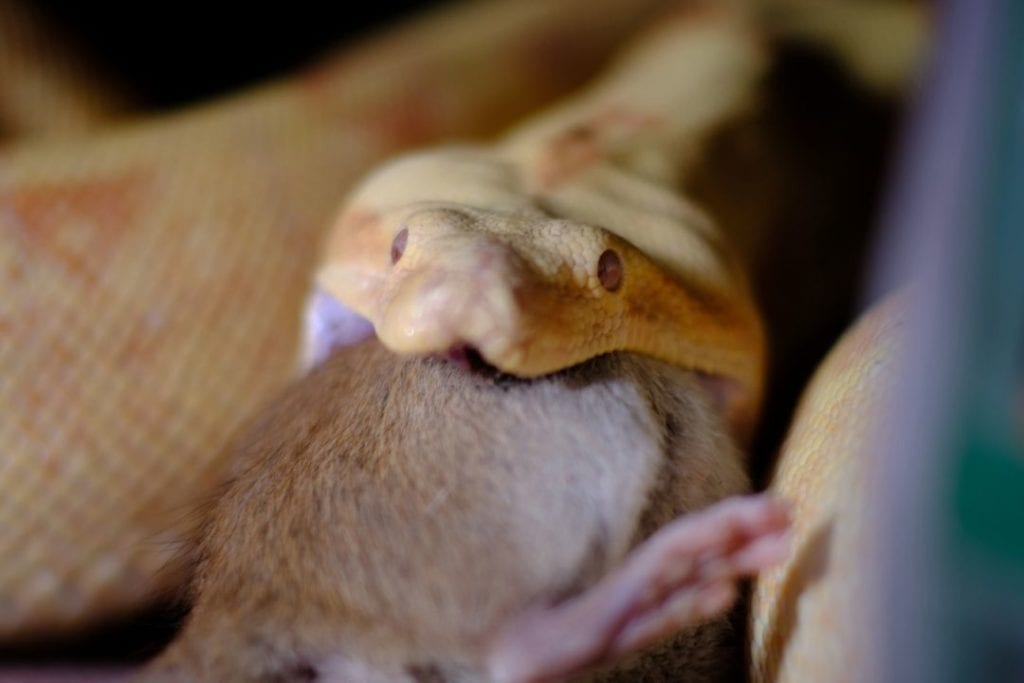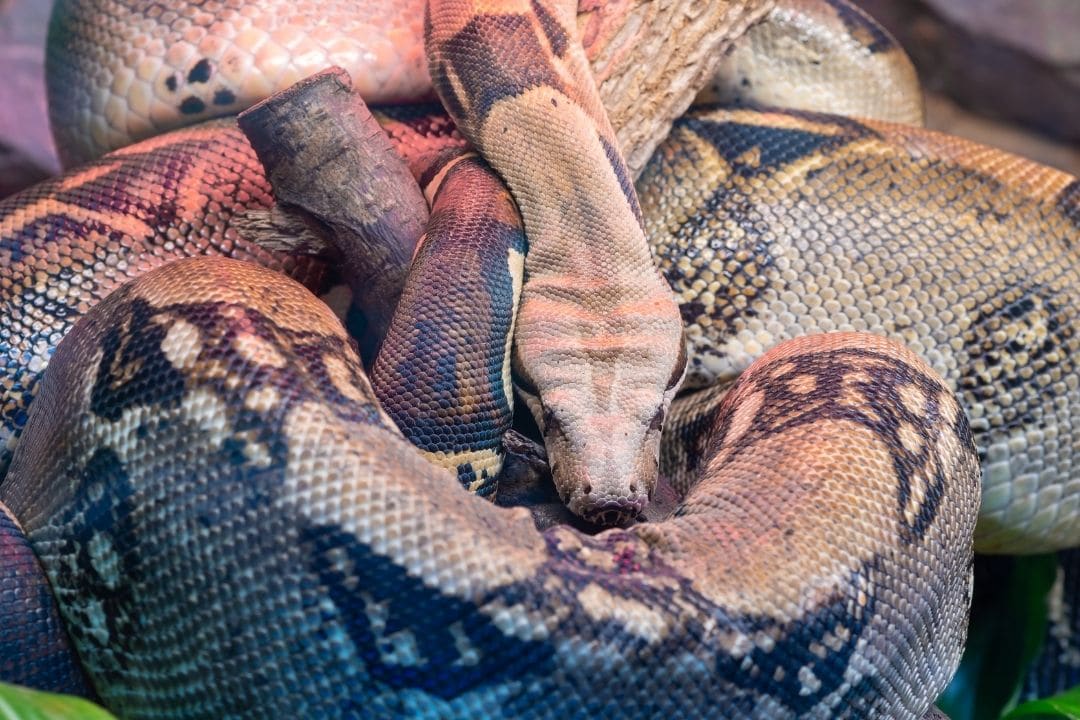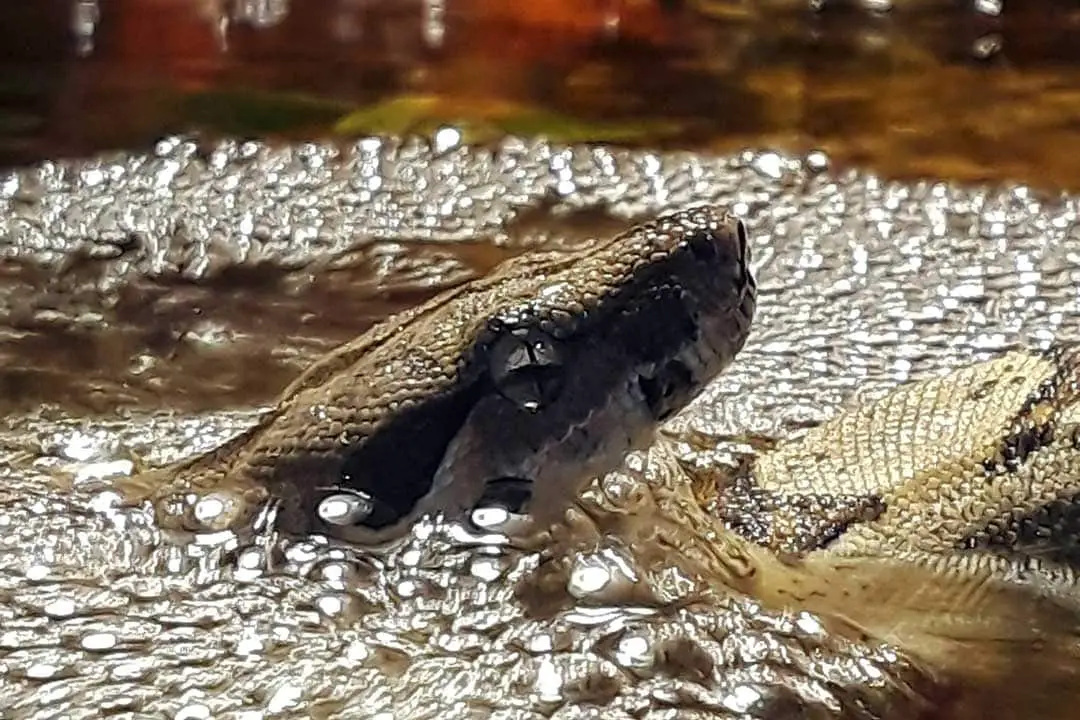The boa constrictor (Boa constrictor) is an ambush predator native to Central and South America. The species covers a wide range and includes insular populations only found on small islands.
You may be wondering: How long a boa constrictor can go without food?
A boa constrictor can go months without food. While it isn’t great for them, boa constrictors can withstand periods of prey scarcity and still be strong enough to take down a meal.
Wild Habits

Boa constrictors are primarily ambush hunters. While they have been observed to actively hunt, most will pick a spot and wait for a meal. They eat primarily terrestrial vertebrates like reptiles, amphibians, birds, and mammals. Many island populations rely on migratory birds as a primary food source.
This can mean that snakes go for quite some time without a meal. Plenty of areas throughout the wide range of this species experience seasonal changes in prey availability. Larger and high-value prey may only be found at certain times of the year.
Snakes are very good at withstanding these slow times. They have much slower metabolisms than mammals. Snakes that aren’t eating will experience a drop in metabolism of up to 70%. It takes about 4-6 days for a boa constrictor to digest a single meal.
Boas will eat as much as they can when they have the chance. This is to give them the fat stores they need to survive lean times. It has been noted that boas have a change in their fat stores when they starved.
This can help them survive. In this study, snakes were subjected to up to 168 days without food. The changes to their stored fatty acids can help snakes survive long periods without food. Their excrement also has a change in the amount of nitrogen present.
One interesting fact about snakes is that they have a massive change in their digestive system when they are digesting a meal. There is a big increase in their aerobic metabolism while the snake is digesting and absorbing the nutrients from its meal. This is measured in how much oxygen the snake consumes during digestion. This study noted that in snakes that have fasted, it takes longer to reach the maximum oxygen consumption. This means that a snake that hasn’t had much luck in hunting will take longer to digest, but will still get the full benefit of a meal.
Male snakes will typically refuse to eat during the breeding season. This is in spring for most localities, but some populations breed at different times.
Male boa constrictors typically breed every year in the wild. They spend time seeking out females in their territories to breed. Female boas can refuse meals or only take smaller prey when they are ready to breed. Once the female is gravid, her appetite tends to lower.
Most females will only eat much smaller meals or even refuse to eat once they are far enough into their pregnancy. This is partly because of how much space the babies take up in the female’s body. The average litter size is 24, but the litter size can vary from 10-64 babies.
This makes it hard for the female to have room for a meal or any feces once digestion is finished.
In Captivity

In captivity, boa constrictors enjoy guaranteed meals. Many captive boas end up obese because they are fed too frequently or fed larger meals than they need to maintain their body weight.
While captive boas tend to eat nearly anything offered, they may still go off their food. Snakes that are breeding or gravid will refuse to feed.
Even if you only have one boa, your male snake may still refuse meals while he prepares to go looking for a mate. Stressed out or sick snakes may also refuse to eat.
Too much handling or recent changes in their environment can stress snakes out and they may refuse to eat until the issue is fixed. Snakes suffering from illnesses or infections will also resume eating once the problem is fixed. Boas that are at the end of their life will also refuse to eat during their last few weeks or months.
You typically only need to worry about a boa if it has skipped 2 meals in a row. At this point, you need to watch for any sudden weight drops or emaciation and be prepared to take your snake to the vet.
Some boas may go a few months without a meal, but it should be watched closely and you should try to entice it to eat. Try a more appealing prey item.
If the feeding strike coincides with an attempt to change prey type, try scenting the prey items to make it smell like the old prey.
Many young boas love to eat lizards, so shed skin from a lizard can be used to scent prey. Be sure to check that all of your conditions are correct.
You need the right temperature and humidity in your boa constrictor enclosure, in addition to plenty of hidden areas to help prevent stress.
You may also want to try feeding at a different time of day or offering it in a different manner. You can also try live prey if you can supervise the entire time the prey is in the enclosure.
Force-feeding is the last resort for a stubborn boa. It should be done by a vet or experienced reptile keeper since it can injure your snake very easily.
Conclusion
Boa constrictors can fast without any ill effects.
In captivity, you should try to keep your snake on a consistent feeding schedule and make sure their enclosure is providing the right conditions. If you have any questions or comments, please leave them below.



